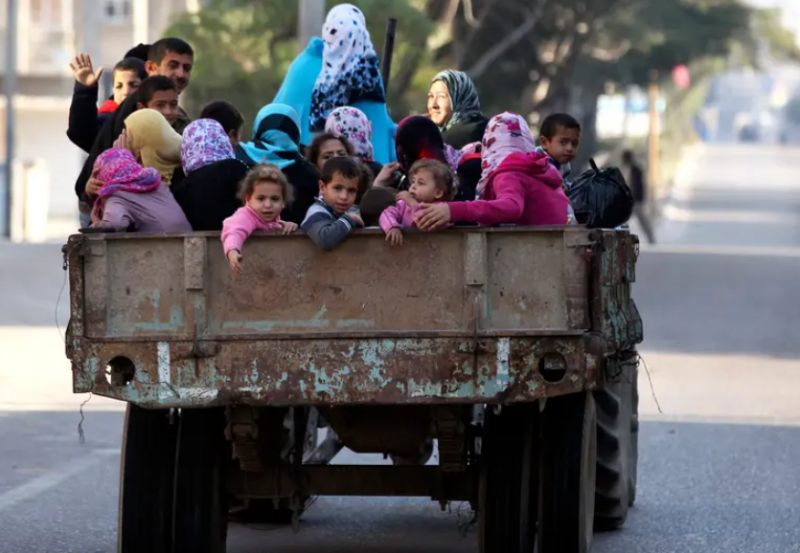Attention turns to Rafah, a city in southern Gaza, as numerous residents fled on Monday following an Israeli army evacuation warning, paving the way for the resumption of military operations in the region. This prompts questions about Prime Minister Benjamin Netanyahu's government's intentions.
#### Possible Plans
Osama Mahmoud Kabir, an advisor at the Egyptian Command and Staff College, noted the increasingly complex and troubling situation. He suggested that the conflicting statements about the Middle Eastern crisis fuel suspicion that the ongoing negotiations for a ceasefire may be part of a deliberate plan to mask a strategy of displacement.
Mahmoud pointed to several reasons for his assessment. First, Netanyahu continues to exacerbate the ceasefire situation. Whenever Egypt and Qatar propose logical and effective measures to calm the situation, he undermines them.
The second reason, he argued, is that Israeli Chief of Staff Eyal Zamir has repeatedly indicated that 2025 is a year anticipated for war. The third reason involves U.S. Middle East envoy Steve Whitkov's acceptance of Egypt's proposal for rebuilding Gaza without displacing its inhabitants, despite some American voices still hinting at displacement ideas.
Israeli Defense Minister Yisrael Katz’s statements about the impending comprehensive ground operation in Gaza, leading to the forced or voluntary accumulation of residents in the south, also raises concerns. He mentioned that two military brigades from the 36th Armored Division entered Rafah five days ago, along with four military divisions tasked with implementing the operation.
#### Potential Scenarios
Mahmoud assessed that if the military operation in the region begins, it would follow predetermined steps or scenarios for displacement. One scenario involves an invasion from the north to the center and then the south, treating any remaining individuals in evacuation areas as legitimate targets for elimination.
The second scenario might involve concentrating residents in Rafah east of the Egyptian international border. Israel could then carry out concentrated airstrikes and artillery shelling to push them towards the Egyptian border, seeking entry on humanitarian and nationalistic grounds.
A third potential scenario could involve the United States and some European countries applying diplomatic pressure on Egypt, possibly through economic means, to persuade it to allow Gaza residents into Sinai.
Mahmoud emphasized Egypt's unchanged stance opposing displacement, citing Cairo's unwavering "no displacement" policy. He noted that ongoing diplomatic efforts and divisions within Israel, amid resignations and internal turmoil, might lead to an unexpected reversal of all pre-planned displacement scenarios.
#### Previous Proposals and Current Status
In February 2025, former U.S. President Donald Trump announced a controversial plan to displace Gaza residents and transform the area into a tourist destination, eliciting international and regional criticism.
On March 4, Egypt proposed an alternative at an extraordinary Arab League summit in Cairo, advocating for Gaza's reconstruction while retaining its residents.
On March 12, Trump retracted his displacement plan, stating that "no one is forcing Gaza residents to leave."
Despite an Israeli decision on March 18 to end a fragile truce with Hamas effective January 19, 2025, negotiations stalled over extending the ceasefire, with Israel aiming for prolonged peace talks and Hamas pushing for a final ceasefire agreement.



